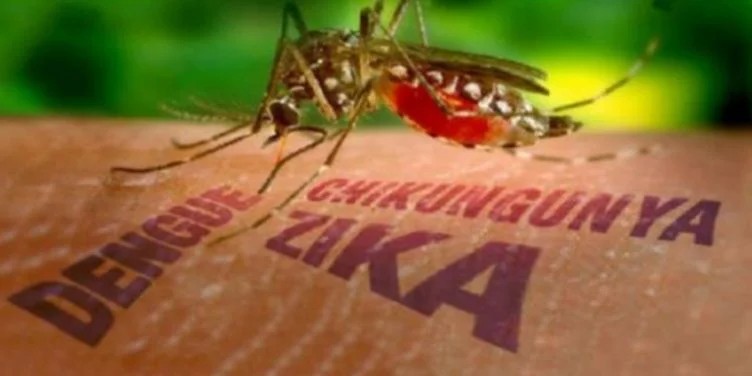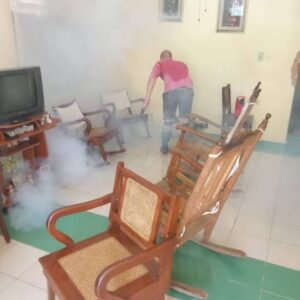Arboviral Epidemic in Matanzas: A Fragile Slowdown That Demands Continued Vigilance.

Matanzas is experiencing a tense pause. The decline in the curve of cases is a respite, but not a victory. The battle against the Aedes aegypti mosquito continues, and only collective discipline can prevent a new surge.
The province of Matanzas is experiencing a slowdown in the rate of new dengue and chikungunya cases, although health authorities warn that the situation remains fragile. Hospital occupancy has decreased, but test positivity rates remain high in several municipalities. “We are in a moment of relative stability, but not tranquility,” summarizes Dr. Berta María Bello Rodríguez, provincial deputy director of Hygiene and Epidemiology.
Constant Monitoring and Prolonged Alert The monitoring of arboviruses is based on what are known as nonspecific febrile syndromes—people with fever without an identified cause. This record, explains Dr. Bello, constitutes the core of health surveillance and is fed by both direct medical care and active case finding in communities.
“Since the last weeks of August, an increase in febrile syndromes began to be observed in several municipalities, which led to the declaration of an alert starting in week 38,” she notes. “Not all territories started at the same time, but the increase was notable in most of the thirteen municipalities in the province.”
The specialist confirms that there is currently simultaneous transmission of dengue and chikungunya throughout the province, and that more than 200 samples sent to the Pedro Kourí Institute of Tropical Medicine (IPK) have ruled out the presence of Zika and Oropouche, the last case of which dates back to July.
In epidemiological week 44, a slowdown in the rate of increase of cases is observed for the first time. “We reached more than 4,000 reported cases in a single week, but this week could close between 3,000 and 3,500. Although there is some stability, we are still in an epidemic zone,” Bello explains. Diagnosis, Positivity, and Gaps
The diagnosis of dengue is confirmed with the IgM test on the sixth day of symptoms, available in all thirteen municipalities through the SUMA system. Only Unión de Reyes is experiencing technical difficulties, and its samples are processed in another area.
During the last week, 1,350 samples were processed with a positivity rate of 27 percent, a figure lower than in previous weeks. However, Matanzas, Martí, Unión de Reyes, and Cárdenas exceeded 40 or 50 percent. Martí reached over 60 percent and was declared to be experiencing dengue transmission after a chikungunya outbreak in Perico.
“Positive tests have decreased, but we still haven’t reached the desired level of IgM testing,” warns Bello.
“Some polyclinics are organizing IgM screenings: they’re not just looking for people with fever, they’re bringing the laboratory to the community. If the level of testing is low, epidemiological work can’t be properly guided.”
The currently circulating dengue serotype in the province is DENV-4, introduced in November 2023.
Co-infections and the challenge of chikungunya
Cases of dengue-chikungunya co-infection have also been identified, although they are not predominant. Unlike dengue, chikungunya presents acute, subacute, and chronic phases, with persistent symptoms such as joint pain and fatigue.
“Chikungunya has changed the way we view infectious diseases,” the doctor points out. “Many patients experience discomfort for weeks or months. We weren’t used to this type of progression.”
In response, the health system established multidisciplinary clinics at the Faustino Pérez Hospital and in municipalities, with specialists in rheumatology, physiatry, internal medicine, and psychology. “We started here, and today the country is discussing the same protocol,” noted Dr. Julio Hernández Sánchez, provincial director of Medical Assistance.
Active Case Finding and Differentiated Care
Dr. Hernández emphasizes that case finding is “the first link” in preventing severe or critical cases. “Initially, we stratified the risk by municipality, prioritizing those where fever cases were beginning to increase. The University provided us with students who reinforced the case finding.”
This strategy reduced the number of walk-in patients at emergency rooms and allowed for better triage. “Today, only those who truly meet admission criteria or have warning signs arrive at the hospital,” he explains. Currently, the province has 1,615 beds available, 557 of which are designated for suspected arboviral infections, with an occupancy rate of just 25.9%.
“We have had up to ten reported severe cases; today only two remain under specialized care, both progressing favorably,” the doctor confirmed. The protocol includes rapid dengue tests, IgM tests, and PCR tests in critical cases. “The rapid test helps us identify if the patient is currently infected with the virus, if they have already developed antibodies, or if they were previously sensitized, which gives us insight into the potential risk of severity,” Hernández explained.

Intensive Fumigation and Citizen Shared Responsibility
The fight against vector control continues in the municipality of Matanzas with a fumigation campaign reinforced by 70 additional sprayers, bringing the total to 95 in the territory.
Despite some technical and logistical difficulties, Dr. Rony Lázaro Reyes Sánchez, deputy director of the Provincial Hygiene Center, assured that the goals will be met, even using Sundays as a catch-up day.
Dr. Pablo Feal, head of the Ministry of Public Health team accompanying the province, emphasized that the role of the population is crucial: “We can have resources and organization, but if people don’t participate, controlling the disease will be prolonged.”
A clear message: shared responsibility
For specialists, the reduction in cases should not lead to complacency. “The most serious cases, even deaths, tend to appear in the final stages of epidemics,” Feal warned.
Authorities insist on the need to maintain self-care, allow entry to health inspectors and fumigators, eliminate breeding grounds, and seek timely medical attention.
“Dengue is present, and it is the one that can potentially make a patient seriously ill,” warned Dr. Hernández. “The screening is working, but individual responsibility is lacking. Success depends as much on the system as on the population.”
Matanzas is experiencing a tense pause. The decline in the curve of cases is a respite, but not a victory. The battle against the Aedes aegypti mosquito continues, and only collective discipline can prevent a new surge.
Written by Yunielys Moliner Isasi.




